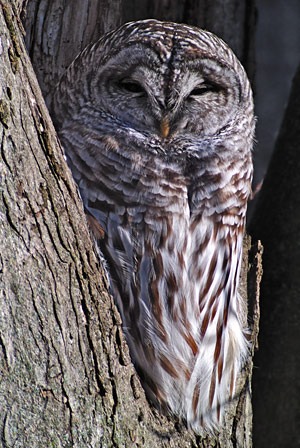Last week at Salisbury State Reservation (MA), I saw two photographers trudge across marshland to get really close to a Snowy Owl for the “perfect” shot. It was disturbing to me, and more importantly, to the stressed owl. So this blog post by Mike McDowell hit home:

Here’s a list of owling ethics that appeared in the Winter 2013 issue of The Passenger Pigeon compiled by Randy Hoffman:
Sleeping owls are happy; if you notice open eyes on a species such as Long-eared, Saw-whet, Boreal, or Screech Owl, back away.
If you notice these same species becoming slimmed down, looking skinny or branch-like, they are trying to hide – back off.
Be a steward of a roost. Take care in whom you let know about the roost. Supply data to eBird after the roost is abandoned.
Do your best to educate others about the stress that can affect owls.
If you cause an owl to fly, do not pursue it.
Do not bait owls with rodents.
No flash photography.
Stay on trails and road shoulders and ditches. Do not block traffic.
No sound devices.
Do not report owl sightings on the internet or bird hotlines.
Speak in soft tones or whispers.
Do not linger in front of an owl for more than a couple of minutes.
Keep a minimum distance. It’s best to observe with a scope.
